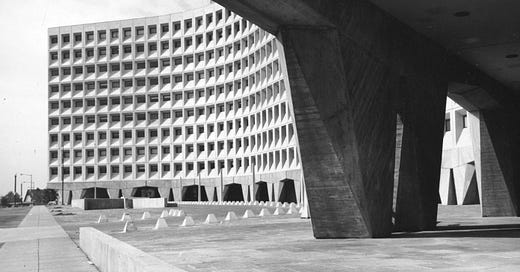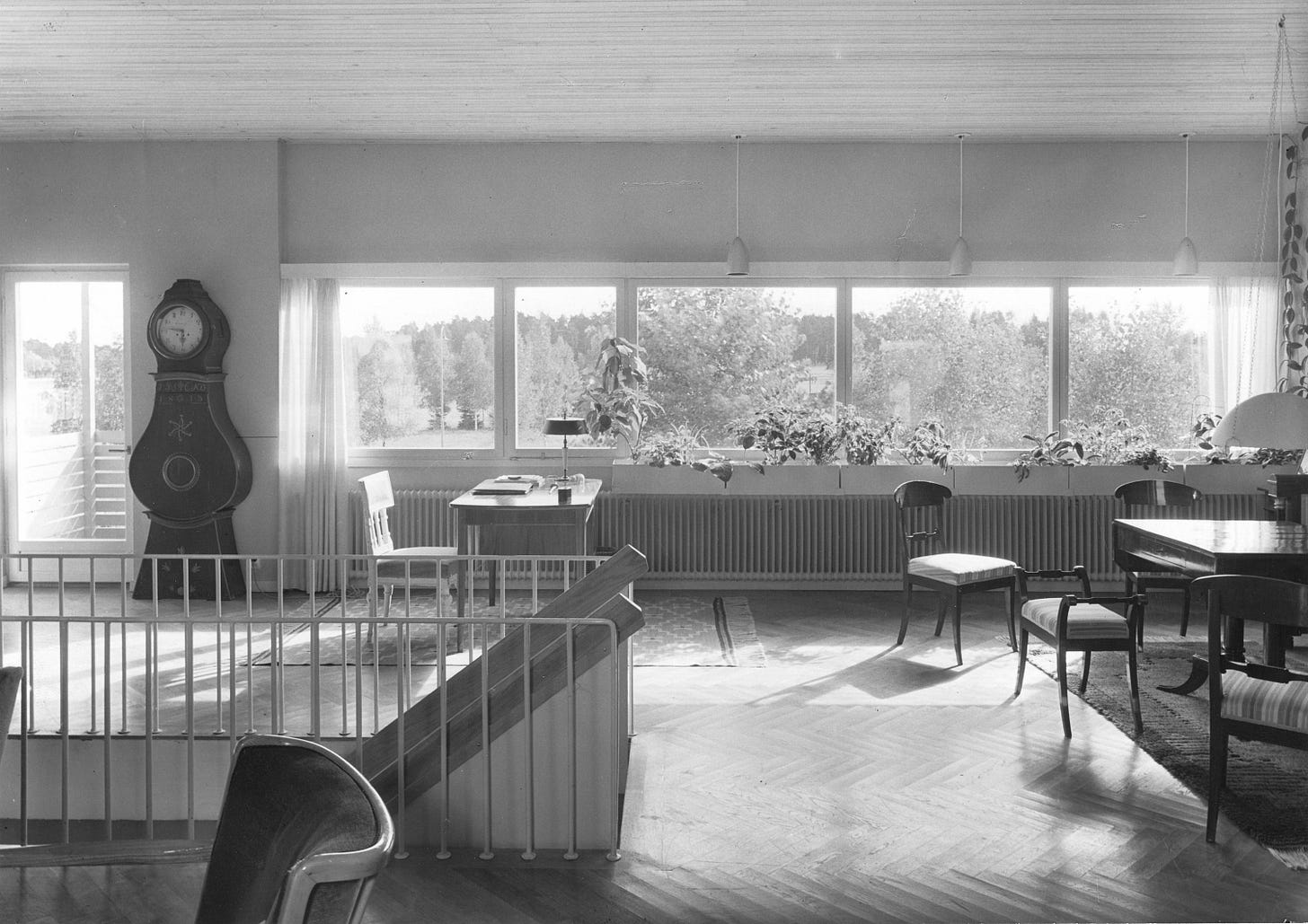Ok.
Two weeks ago, I published this post sharing events, exhibitions, and conversations happening in the architectural discipline today. In the paywalled section, I mentioned an exhibition that recently closed at Harvard’s Graduate School of Design entitled Towards a Newer Brutalism. In it, curator Emmett Zeifman argued for a return to Brutalism, or at least the Brutalist ethic, in contemporary architecture.
Emmett is also teaching a seminar of the same name at two Ivy League universities (Harvard and Columbia) and is the guest editor of the 2025 summer issue of Log magazine, widely considered the leading publication of theoretical discourse in architecture. The subject of the issue is, you guessed it: New Brutalism.
I imagine this is horrifying to many. How is a style so controversial being seriously discussed at the world’s leading research institution for design? Why does Brutalism need to be revived?
Zeifman provides a relatively ‘straightforward’ (lol) answer to this question:
“Today, amid a constant hum of 21st-century crises, a newer brutalism is in the air. Design studios and digital media platforms overflow with projects that transparently express building structures and systems, a resurrected functionalism rendered in the earthtones of low-carbon construction. Younger American architects are perfecting the art of assembling everyday materials into self-evident forms, while historians provide material accountings of architecture’s everyday assemblies. After a half-century in which various theories and practices of architecture’s autonomy were often literally hung as cladding over an unperturbed modern substrate – of structural frames, stacked floors, open plans, electrical and mechanical systems, industrialized light framing, etc. – the field of architecture is increasingly committed to methods that reveal, and materially transform, these stubborn “facts” of construction.”1
In other words: The children yearn for Brutalism.
Given the return of Brutalism in academic discourse, and the influx of conversations on the topic thanks to a certain Hollywood film, I thought it was time I wrote something about the style.
The motivation behind this post comes from a simple observation: online, I see a lot of people discussing Brutalism. They talk about the style’s origins, aesthetic tendencies, goals and values, its effects on society, and whether or not it aligns with people’s tastes.
In most cases, no one has any idea what the hell they’re talking about. I see more factually incorrect information than factual.
My goal in this post is to address the following questions factually:
What is Brutalism and what are its origins?
What purpose does Brutalism serve?
What are the tenets Brutalist Architecture?
Does this style have any business being revived?
I hope to directly address some common misconceptions along the way. Feel free to drop a question if you have any.
Thank you for your support.
- David Perrine
Keep reading with a 7-day free trial
Subscribe to On Architecture to keep reading this post and get 7 days of free access to the full post archives.




